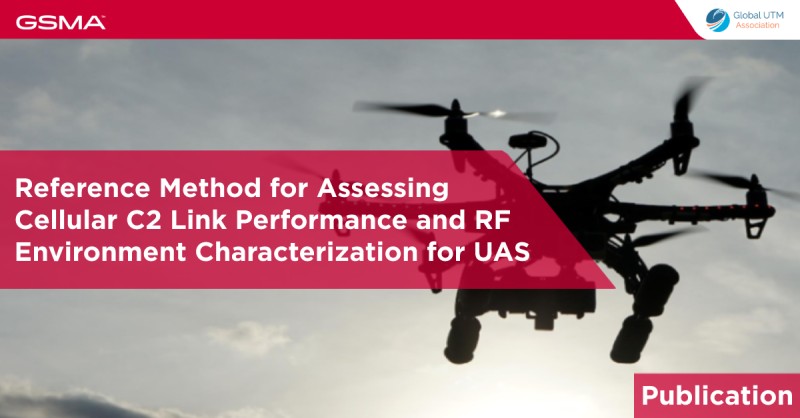The Aerial Connectivity Joint Activity Group (ACJA) – formed by the Global Uncrewed Traffic Management (UTM) Association (GUTMA) and the Global System for Mobile Communications Association (GMSA) – has released a Work Task #2: A reference method for assessing cellular C2 link performance and RF environment characterisation for unmanned aerial systems (UAS).
In order to support beyond visual line of sight (BVLOS) operation at scale, there is a need to be able to characterise the performances of the cellular link in different situations, including different geographical environment and also the nature of the drone operations (e.g. linear inspection, package delivery, etc). Hence there is a need to perform several tests and collate the appropriate information.
ACJA members have been working together to establish a Reference Method that provide objective information about feasible technical capabilities to authorities, depending on the considered environment, and standardization bodies for defining safety-related cellular link performance standards and technical-operational requirements and recommendations. Practically, this means that a Reference Method includes: 1) the aerial and ground measurement of the cellular RF environment 2) measurement of the C2 link performance between a particular drone type and its control station (CS) 3) process and procedures for conducting flight measurement operations in a standardized fashion.
Drone developers, operators, and regulators may also benefit from having a reference method for assessing the performance of a particular drone type’s cellular C2 link across varying operational environments throughout the lifespan of the drone system.
This document was created by the ACJA (Aerial Connectivity Joint Activity). The main aim of the ACJA is to promote the exchange between the aviation and cellular communities, and to synchronise contributions between the existing Standard Development Organisations (SDOs) of each community, in order to avoid incompatibilities between them.
Contributors include: Thomas Neubauer (TEOCO), Mark Williamson (Verizon), Bri O’Neill (Verizon), Shashi Dulal (Verizon), Taulant Berisha (Dimetor), Sebastian Woblistin (Dimetor), Fanny Parzysz (Orange), Samira Homayouni (H3A), Pawel Montowtt (Involi), Nora Metzner (Droniq), Aleksandar Prekajski (Telus).
Download the document here
For more information visit:




